The Kyoto Costume Institute
Museums, private collectors, and auction houses have increasingly begun to offer tantalizing glimpses of their collections and offerings online. The number of these "digital archives" has steadily increased in the last couple of years, providing longed-for access to distant and often elusive extant garments and accessories. It's always so exciting to stumble on new sources of costuming inspirations, so we've decided to begin a new "feature" series for the blog to facilitate those "ooooo!" and "ahhhhh!" moments of blissful revelation. Once a month, we will select an online collection to profile and highlight ten of our favorite pieces from it for your viewing (and sighing and drooling...oh yes, and educational!) pleasure. Our hope is that perhaps we'll be able to introduce you, gentle reader, to something new and exciting along the way.
This month's featured museum collection is the Kyoto Costume Institute, located in Japan. Their digital archive, which includes only about 200 of their over 11,000 articles of clothing, is accessible here. Though already extremely well-known to the majority of costumers, the Kyoto collection is nonetheless a truly stunning resource that well deserves to be the subject of our first profile. This current post only includes items from KCI's 18th century collection, though their holdings span up to the present day and we encourage you to check out their website to discover the many other treasures they own. When using the digital archive, be sure to utilize the zoom feature for some prodigiously lovely up-close views.
Unless otherwise noted, the following images are borrowed from, and linked directly back to, the website of the Kyoto Costume Institute and originate entirely from their digital archive. They remain the full and copyrighted property of KCI. All images are used for private educational purposes only, and no copyright infringement is intended. Happy drooling!
Our Kyoto Top Ten:
Number One: Our first selection, chosen by Ashley as her top pick (because she fancies green, if you haven't noticed!), is an English silk taffeta petticoat embroidered with Chinese and English floral and nature patterns, dating to about 1720 (KCI inventory #AC3657 81-1-4).
A petticoat with this type of embroidery would have been worn paired with an open robe (gown) or with a short jacket, which permits the fantastically detailed work to be on full display. Below, the petticoat is pictured with a French pet-en-l'air dating to 1775.

Photo scanned from Revolution in Fashion: European Clothing 1715-1815, p. 31.
Number Two: A white, pink, and green crossbarred silk taffeta gown and matching petticoat dating to the 1760s (KCI inventory #AC4628 83-21-1AB).
Janea Whitacre, Mistress of the Trade of Mantua-making at
Colonial Williamsburg, modeling a recreated silk gown very
similar to the Kyoto original. The photo is linked from the
Number Three: Saque-back gown (robe a la francaise) of yellow lustring (a plain-weave silk given a lustrous finish by the application of a glaze and heat), England, 1760s (KCI inventory #AC5761 88-11AB). The gown is displayed with a black silk covered hat, a black silk lace handkerchief (fichu), and silk taffeta mitts. So simple, but oh so elegant.
Number Four: A Lyons silk chiné gown, France, 1765 (KCI inventory #AC5317 86-8-5AE).
Silk chiné, or chiné à la branche, is silk with a pattern printed on its warp before the weaving process begins. This produces the pastel "water blotting" coloration visible in the detail photos. Silk chiné was difficult to make and only produced in France in the mid-18th century. It enjoyed great popularity as a summer fabric for the French elite, most notably the Marquise de Pompadour (source: Revolution in Fashion, p. 142).
Number Five: A white glazed linen saque-back gown printed with a blue floral pattern, France, 1770s (KCI inventory #AC7621 92-34-2AB). It closes with a compere (false stomacher) front.
There are two things that fascinate me about this gown. Firstly, it is a glazed linen - a linen chintz, in other words. One of the things that made cotton chintz such a luxury item was the expense involved in producing the glossed surface on the textile. It's interesting that linen, a fabric we typically associate with affordable, every-day garments of the 18th century, would have undergone this type of finishing process. The quality of this linen must be extraordinary, much superior to anything we have available commercially today. What I wouldn't give to literally get my hands on this gown!
Detail of the compere front, a false stomacher closed with buttons.
The other thing I find intriguing on this piece is the amount of trim, definitely rare on a linen gown. I can't quite figure out what kind of trim has been used in the "middle column" down the sides of the skirts, though. If anyone has an idea, please share your thoughts because I'd love to know!
I was also quite chuffed to find this piece because the fabric is very similar to that which I used on my newest quarter-back gown. If only I had more of it to posh up my gown to the standards of this original!
Number Seven: Pink silk taffeta saque-back gown with matching petticoat, France, 1780 (KCI inventory #AC5312 86-8-1AC). The floral garland motif is painted onto the silk. A gown with skirts this wide in the last quarter of the century would have been reserved for court wear or very formal occasions.
Number eight: English back gown (robe a l'anglaise) of painted china silk, England, 1785 (KCI inventory #AC3837 81-15-2AD). The larger scale of the floral pattern dates the fabric to about 1760, suggesting this gown was remade from an earlier one to keep up with the swiftly changing fashions of the 1780s.
Number nine: English back gown (robe a l'anglaise) of blue striped silk, France, 1785 (KCI inventory #AC4320 82-17-39AB).
Number ten: Pierrot jacket of red and white striped silk, buttoned with silver buttons, France, 1790s (KCI inventory #AC9113 94-11-2). The pierrot jacket was a fitted bodice with short tails or a peplum that was cut to flare behind; it typically had long sleeves. This style jacket was popular from the 1780s into the early part of the 1790s.
Printed Resources featuring items from the Kyoto collection:
Luckily for those of us on the opposite side of the world, unable to witness these wonders first-hand, there are a number of spectacularly illustrated books that feature items from the Kyoto collection.
- A two-volume set entitled Fashion: A History from the 18th to the 20th Century, published to commemorate Taschen's 25th anniversary, presents a significant portion of the KCI collection in a beautiful, large format.
- Just last week, I discovered a re-release of the one-volume edition of the two-volume set at a fantastic price at Barnes and Noble. I can't find a link to it on their website or on Amazon, but I promise it was there and the price makes it well worth a trip if you don't own a copy of this! I understand that the one-volume edition necessarily edits out a handful of the photos, but at over 700 pages, it still includes almost all of the original text. You can preview the older one-volume edition on Googlebooks.
- There is also a highly affordable, condensed version of the above books available in a portable "pocket" size, but be warned that the page size is less than half of the two above editions, which means the photos of the pretties and the text accompanying them is significantly smaller. If you desire proper details-viewing ability and can find a copy of the re-released single-volume edition, I'd strongly encourage you to go for that one instead.
- In 1989-1990, the Kyoto Costume Institute, in collaboration with the Fashion Insitute of Technology, staged an exhibition entitled "Revolution in Fashion" featuring KCI's eighteenth-century collection, and subsequently released an accompanying catalog with the same name. It is extremely hard to find (and pricey if you can locate it), but the photos are stunning and the selection of articles included in the volume are by some of the best in the field. This is, most unfortunately, out of print, but many of the pictures are replicated in the Taschen books, so don't feel too left out if you can't get your hands on this one just yet. In the meantime, we'll keep begging for a reprint!
One final note: If you know of an online collection that you feel deserves some proper attention here, please do feel most welcome to suggest it to us for a future "Treasures and Curiosities from..." post!

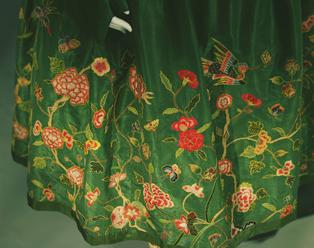

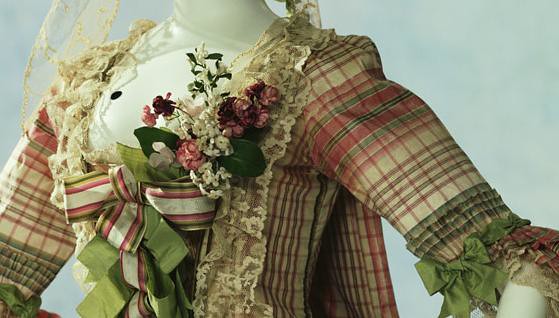

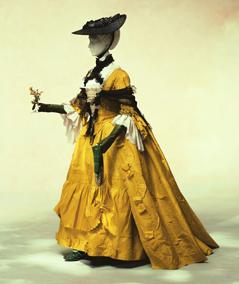

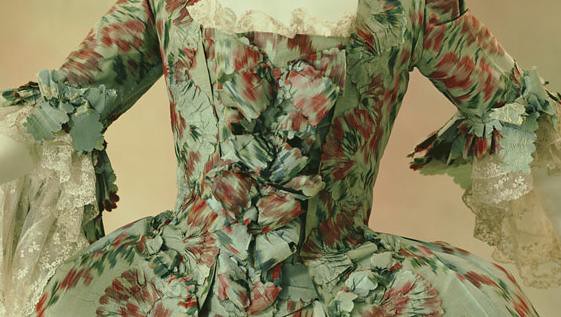
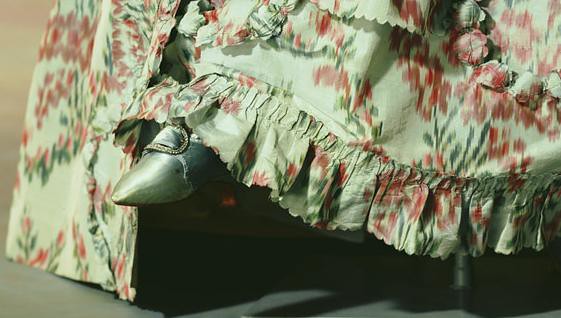
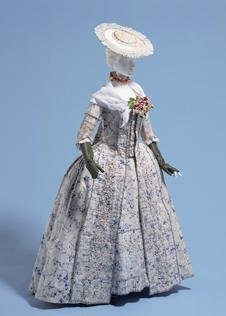
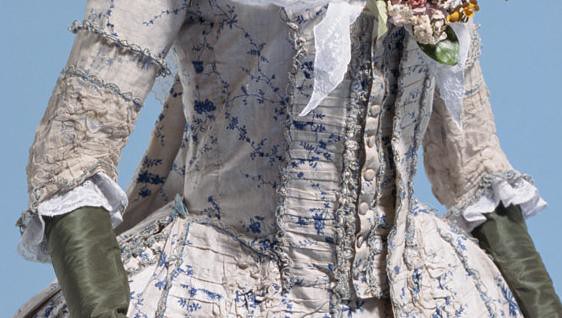
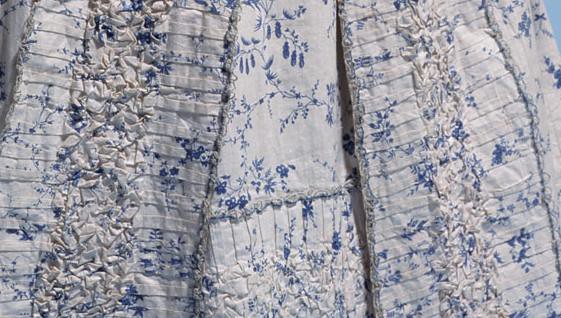
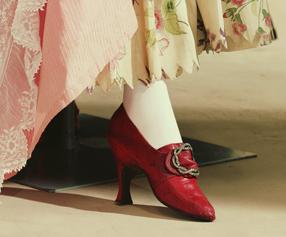
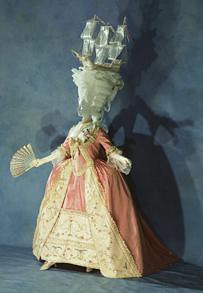
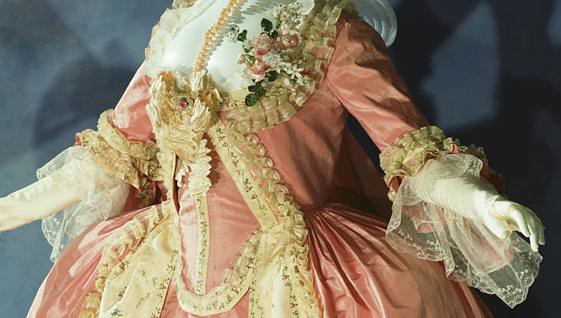
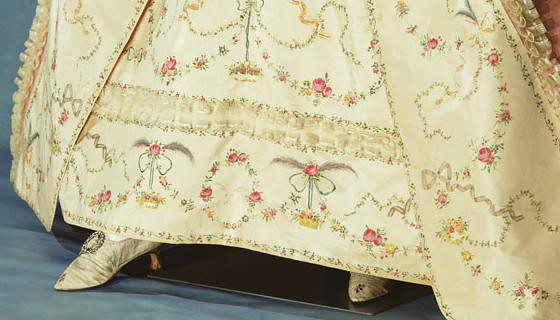

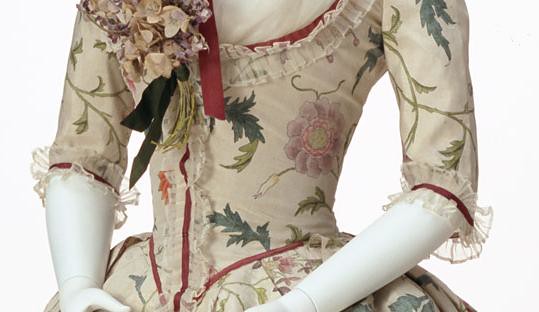

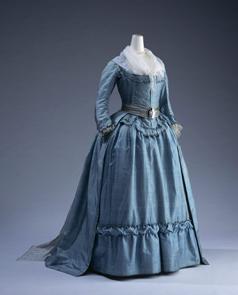
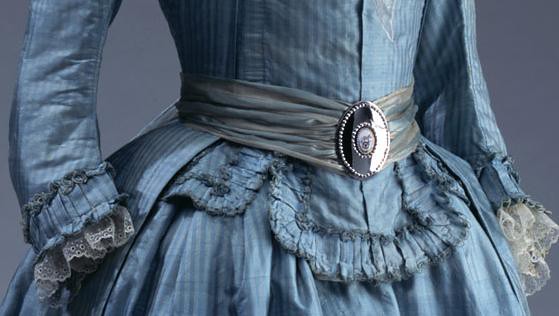
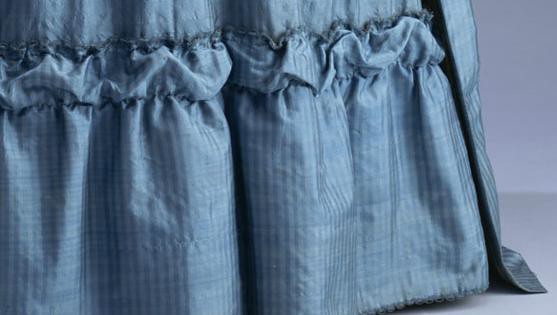
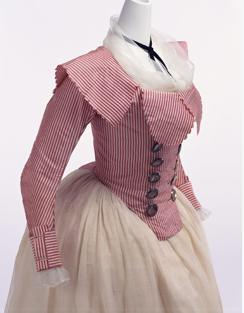

6 comments:
What a great way to take a break from decorating and baking! I've always wondered how 18th century gowns ended up in a Japanese museum? It's not the first place I'd think to look. I thought that blue floral reminded me a lot of your gorgeous gown. I love that green one with flowers that were printed on the warp before weaving. It's almost like an impressionist painting, long before Impressionism became an art form.
Laurie
Ah, such a feast for the eyes and imagination:) Bless you! As an author of 18th-c. historical fiction, your blog is a wonderful find!
Ooohh...yum! I love the Kyoto Costume Institute. Thank you for sharing your favorites. I think I'm in love with #9 the blue English Back Gown...that belt is adorable! And the structural detail of the sleeve cuff on #10 is inspiring. I would like to make a 'modern' jacket in structure to that bodice.
Laurie, I love your comparison of the chine gown with Impressionist painting! I hadn't thought of that, but it perfectly describes the look, doesn't it? I wish I could find fabric like that available today.
Laura - thank you for the compliment! It's always fun to get lost in the fashions of the past. If only we could still dress like this...:-)
Jenni, don't you just love the clever use of the stripes on that jacket? I wish I could see the back, though - I bet the piecing there was equally brilliant! If you really do made a modern interpretation, I'd love to see it!
I think the decoration on the blue linen gown is kind of a smocked-type effect with the same fabric. Did that make sense?
Heidi, I think you're on the right track about that trim. It's definitely self-fabric, but I can't figure out for the life of me how exactly they produced that effect. The narrow edging on the trim also appears to be self-fabric, ruched very tightly, and I'm wondering if they did something similar to that to produce the look on the larger panel piece. Hmmmm. I just want to try it out so badly!
Post a Comment